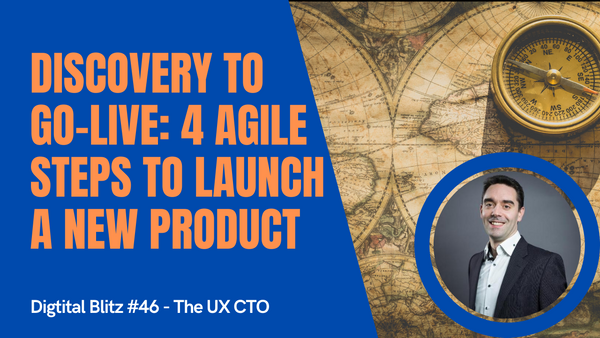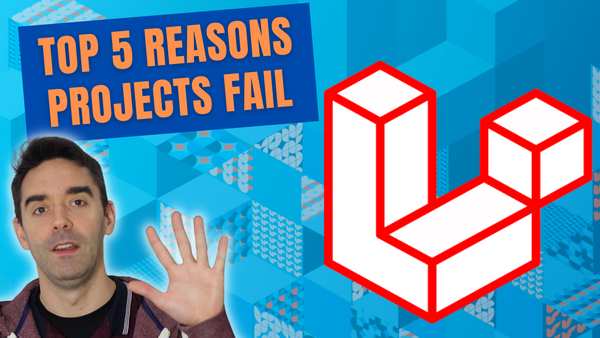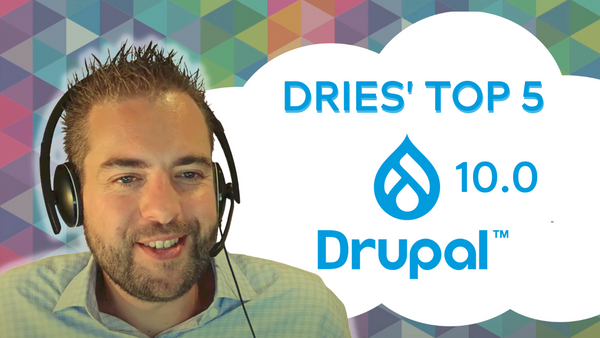When you're working on a new digital product, whether it is launching a new startup or releasing a new product as part of a large public sector or corporate organisation, I always usually recommend following an Agile delivery. Those Agile delivery methods encourage teams to build very quickly, to test what they've built, and iterate the work based on regular feedback.
There is a great 4-step process to follow to ensure that you can continually get the right inputs and validate the decisions throughout, from the general ideas all the way to the final product.
It starts with the discovery, followed by the alpha and the beta phases, all the way to go-live.
Let's get into more details about those four steps.
4 steps for Agile delivery
When you apply Agile delivery methods, you gather the requirements, you plan, you design, you build and you test pretty much at the same time.
However, you cannot go straight into building the product with real code and a database from day one, just with an idea. You need to validate the concept and the business case. For that, you need a process to take it one step at a time and gradually progress towards a solution.
This is where the four steps of Agile really helps. It pretty much guarantees that whatever product or service you create will be useful to your end-users.
1. Discovery
You need to start small just with a concept in the DISCOVERY phase. This is where you need to understand the actual problem you are trying to solve and how it fits in the wider ecosystem. You need to remove all the assumptions and understand the risks very early on because what you THINK people might want, might not be accurate. During discovery, you need to confirm that you can actually solve that problem. You can start producing low-fidelity user journeys and understand the whole end to end process, the risk and the opportunities. The goal is to generate a list of ideas that you can test in the next phase.
2. Alpha
This is when you are ready to move to the ALPHA phase. You need to take the findings from discovery and begin to experiment with potential solutions. The goal is to test many of those different ideas very rapidly, and you should usually focus on the riskiest first. You need to see what works and what needs throwing away. At that stage, it's still easy and cost-effective to do. You do that through higher fidelity prototypes that you can put in the hands of real users. You can start looking at the technological constraint as well, and how the entire idea and the whole picture can start to take shape.
3. Beta
Then, once you have that, you can move to the BETA phase. When you have a better idea of what the product is going to look like, and you can start building the real thing and an actual working software. In Beta, you need to plan how your service will integrate with or replace existing services. This is when you start, as I said, building an actual software: you can still use low-code or no-code tools to simplify some of the integration steps, for example. You need to start playing with real data through the end to end, and keeping it secure at all times obviously. This is usually the longest phase, as you keep iterating over a few sprints. Once you reach a minimum viable product, you might decide to soft-launch in a private beta, just with a few selected users. I've seen some clients or public sector organisations move to a public beta. You label it as "beta", so customers know that it's not the finished article, but it is a working version that is better than what was there before... it helps the users
4. Live
Once you have enough feedback to show that your service works for your users and meets all their needs, it's time to go live. You can start thinking about discontinuing the previous service. There are plenty of things to consider for such migration, like final security and accessibility audits, quality assurance sign-off, how you're going to monitor all the KPIs... If you reach there, it's a big day so congratulations!
Bonus Step - Ongoing improvements
However, once it's live, the process doesn't stop. It NEVER stops... You continually need to track user activity and gather feedback to learn and improve your product or service. This is the only way to ensure that it continues to meet the ever-changing and evolving user needs.
That's it for today. If you're considering launching a new digital product or service and need help for this Agile process implementation, just get in touch. Don't forget to subscribe to my YouTube channel and follow me on Twitter to keep learning with me and grow your career in digital.
Until next time, stay safe and see you soon.



